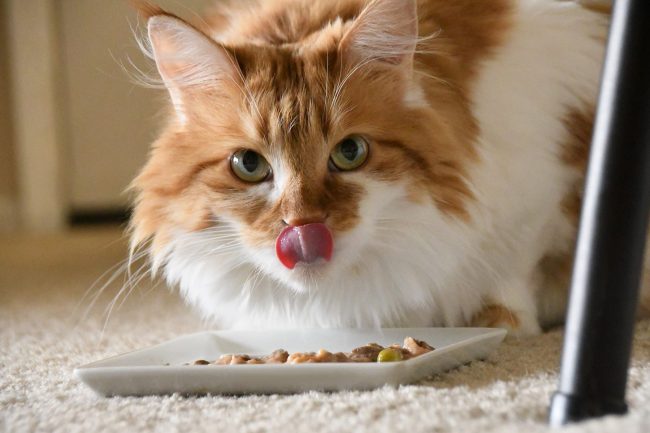
I have a diabetic cat (Diabetes Mellitus) who is currently on dry food. I’m looking to switch her across to a more natural diet – how do I make the change without exacerbating her condition?
I’ll start with the simple answer: yes, you can switch to a new type of food! But before doing so, we first need to understand the care that must be taken.
Being the pet parent of a diabetic cat, you’ll know that treatment involves administering a daily injection of insulin to coincide with her feeding routine. The routine will come down to the individual feline and will be worked out by a vet: this is why any dietary alteration must be carried out with their professional support and consent.
The switch needs to be made slowly, as the carbohydrate content in a raw cat foodor cooked diet is much lower than that of a dry diet: this will affect blood sugar levels significantly, which, in turn, can impact insulin levels. As a result, consistent monitoring by you and your vet is vital during this period.
When food is ingested, carbohydrate particles are broken down into glucose by the small intestine; the glucose is then taken up into the bloodstream. In healthy animals, this glucose is used in cells as energy, allowed through the cell membrane by insulin.
In the case of Diabetes Mellitus patients, they lack insulin or the ability to use insulin. The result is starvation of glucose in the cells plus high glucose in the bloodstream. The kidney excretes the excess blood glucose into the urine.
If Diabetes Mellitus is left untreated or poorly managed, pets can develop Ketoacidosis. In this instance, the body begins to break down stored fat into fatty acids and ketones, which provide energy but are very acidic. The body becomes too acidic and goes into shock.
Nutrition plays a crucial part in the regulation of glucose in the body. Like many dry diets, a carbohydrate-based diet causes a fluctuation in blood glucose; moving away from this and instead opting to feed a fat and protein-based diet can really help bring your mog’s glucose levels under control.
A high fibre and low soluble carbohydrate diet is recommended for felines – and is especially good for a diabetic cat. Whole food diets such as these are known to achieve better blood sugar control than dry diets and are proven to reduce daily required insulin doses. A raw or cooked diet can also help with weight control, which can be a big issue for a diabetic cat; lowering their weight can lead to less strain being placed on their body while improving their overall health.
In other words, it’s worth saying goodbye to a dry diet and going fresh.
Do note: as reduced-carb diets lower the needed insulin dose, it’s critical to closely monitor blood sugar when switching. Otherwise, an insulin overdose could occur and result in Hypoglycaemia (low blood sugar).
Switching the diet of a diabetic cat
As we know, many cats are resistant to change, so the switchover to a raw or cooked diet can take a while – in some cases, a good few months! Don’t be too disheartened if the process takes time: it’s completely normal.
Felines often favour food by texture, so as you are transitioning her from dry food, the shift to raw may take a little longer. She’ll need to get used to eating softer food, and many mogs don’t accept this straight away.
Another note: please do not let your cat starve herself during the transition. Those who refuse raw food will not give in, even if they are hungry. This can cause feline Hepatic Lipidosis (liver failure). Transitioning at a rate she is comfortable with is very important.
